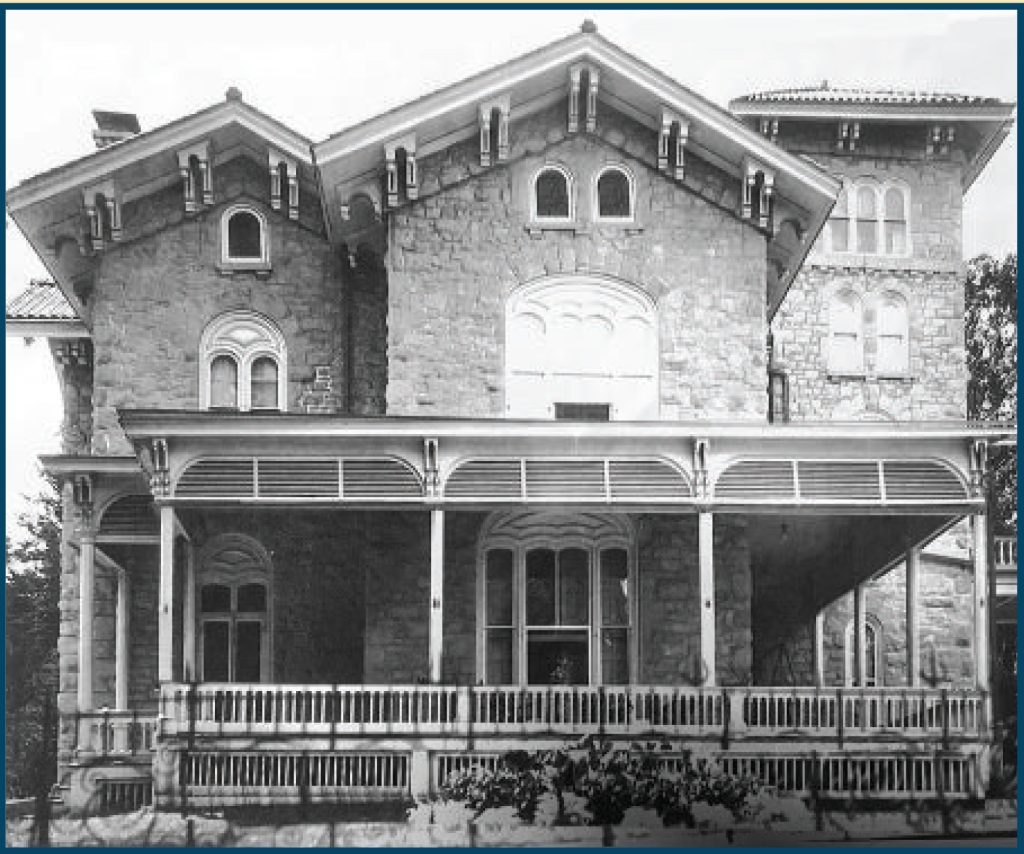
HARVEY’S MARBLE CASTLE
Hastings-on-Hudson NY
Circa 1835, quarry owner George Harvey used his own stone to build a house on his estate in Hastings. Subsequent owners added a turret and the house became known as the “Marble Castle.” After years of neglect, in 1963 the Castle was razed and its marble remains were used as landfill for an exit ramp for the New York State Thruway. Two related marble structures are still standing nearby: 13 Division Street, once the caretaker’s cottage on the estate, and 2 Marble Terrace, Harvey’s former barn.
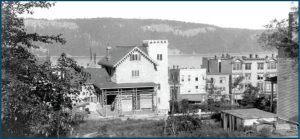
PHOTO COURTESY OF THE HASTINGS HISTORICAL SOCIETY

LONGUE VUE
Hastings-on-Hudson NY
Circa 1860, Louis Anthony Gescheidt, a renowned New York City eye doctor, used Hastings marble to construct a large mansion on Broadway at the southern border of the Village. In 1910, proprietor Ralph Adrian Gushee converted the building into Longue Vue, “New York’s most fashionable suburban restaurant.” The establishment, with its “Sixty Mile View,” quickly became popular with luminaries such as Billie Burke, Flo Ziegfeld, and New York City Mayor, Jimmy Walker, as well as wealthy patrons like the Morgans, Goulds and Astors. Prohibition, followed by the Depression, was not kind to the restaurant and it closed for good in 1933. Twenty years later, Longue Vue was demolished and the eldercare facility, Andrus-on-Hudson, was built on the spot.

Longue Vue Restaurant, seen from the south in 1927. PHOTO BY A.C. LANGMUIR, COURTESY OF THE HASTINGS HISTORICAL SOCIETY

BURKELEY CREST
Hastings-on-Hudson, NY
In 1910, Broadway sensation Billie Burke, known later for her role as Glinda the Good Witch in “The Wizard of Oz,” bought the old Kirkham estate in Hastings. Renamed Burkeley Crest, the circa 1850 house was a graceful structure made of Hastings marble. After the birth of their daughter in 1916, Billie and her husband, Broadway impresario Florenz Ziegfeld, moved their family into the Hastings mansion and proceeded to live there in high style. The stock market crash of 1929 ruined the Ziegfelds financially and, after Ziegfeld’s death in 1932, Billie was forced to sell Burkeley Crest. The new owner demolished the old stone mansion in 1940. Today, the grounds are the site of the Hastings School District’s Burke athletic fields.
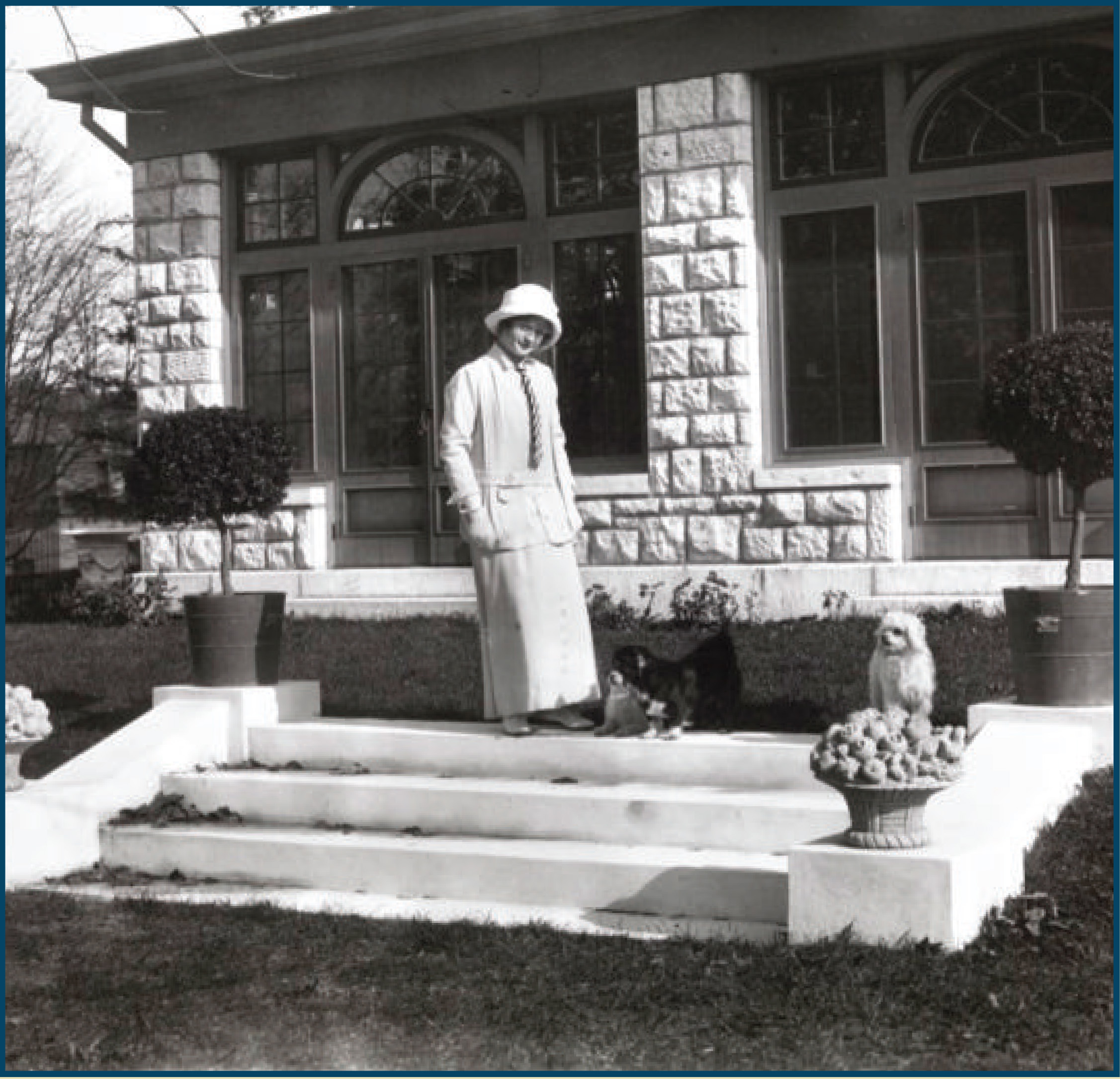
Billie Burke and her dogs standing on the terrace of Burkeley Crest, circa 1912.
PHOTO COURTESY OF THE MUSEUM OF THE CITY OF NEW YORK

THE MARBLE COTTAGE/OAKLEDGE
Hastings-on-Hudson, NY
In 1852, John William Draper built a house for his sister, Dorothy Catherine. Constructed out of local unpolished marble from the nearby quarry, the house was known at the time as the Marble Cottage. After Dorothy moved out in 1882, the cottage was rented to a number of tenants. Arthur C. Langmuir purchased the property in 1919 and renamed it Oakledge. It became home base for Langmuir’s various community projects, including his transformation of the adjacent abandoned quarry into a spectacular park.

Oakledge in the 1920’s or 1930’s. This house, located on Broadway, is still standing.
PHOTO BY A.C. LONGMUIR, COURTESY OF THE HASTINGS HISTORICAL SOCIETY

MARBLE COLLEGIATE CHURCH
MANHATTAN
In 1851, stone mason Matthias Bloodgood paid $60,500 for “the best quality of Hastings marble,” to be used for the construction of an impressive new church in New York City. Architect Samuel A. Warner designed the church in the Neo-Romanesque Gothic style, with a soaring, open interior that featured cantilevered balconies with no visible support pillars. The church was dedicated on October 11, 1854. Marble Collegiate Church, still standing today at Fifth Avenue and 29th Street, was designated a New York City landmark in 1967.
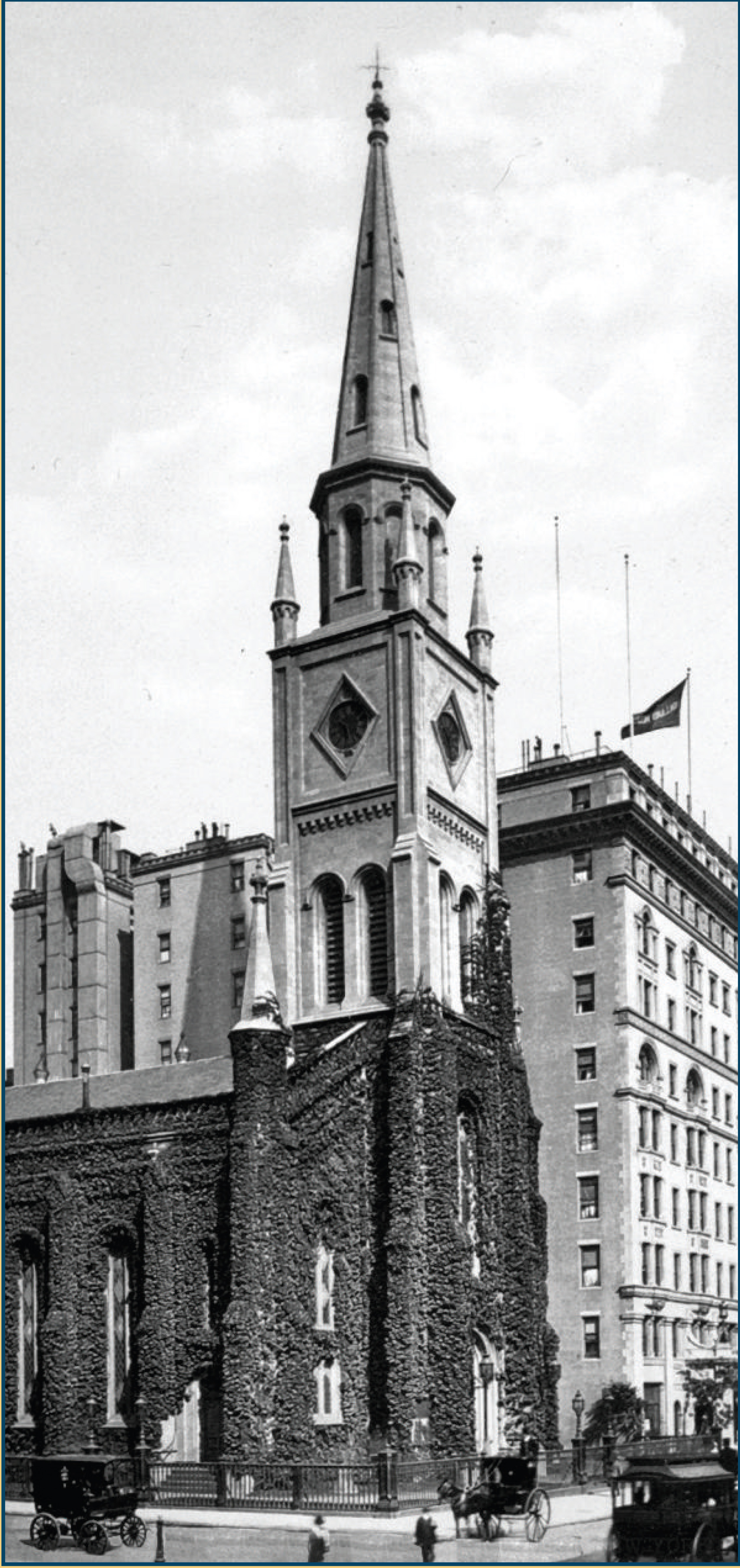
Marble Collegiate Church in 1901.
PHOTO COURTESY OF THE LIBRARY OF CONGRESS,DETROIT PUBLISHING COMPANY PHOTOGRAPH COLLECTION

THE U.S. CUSTOM HOUSE
CHARLESTON, SOUTH CAROLINA
Begun in 1849, construction of the U.S. Custom House in Charleston took 30 years to complete. Hastings marble was used for the initial stages of the Greek Revival style building. Construction came to a halt during the Civil War, with bombardments of Charleston by the Union fleet damaging the partially-built structure. Public monies were not re-appropriated until the early 1870’s, by which time the marble quarry in Hastings was no longer operational. Stone with similar characteristics from a quarry in nearby Tuckahoe was secured to finish the project in 1879.
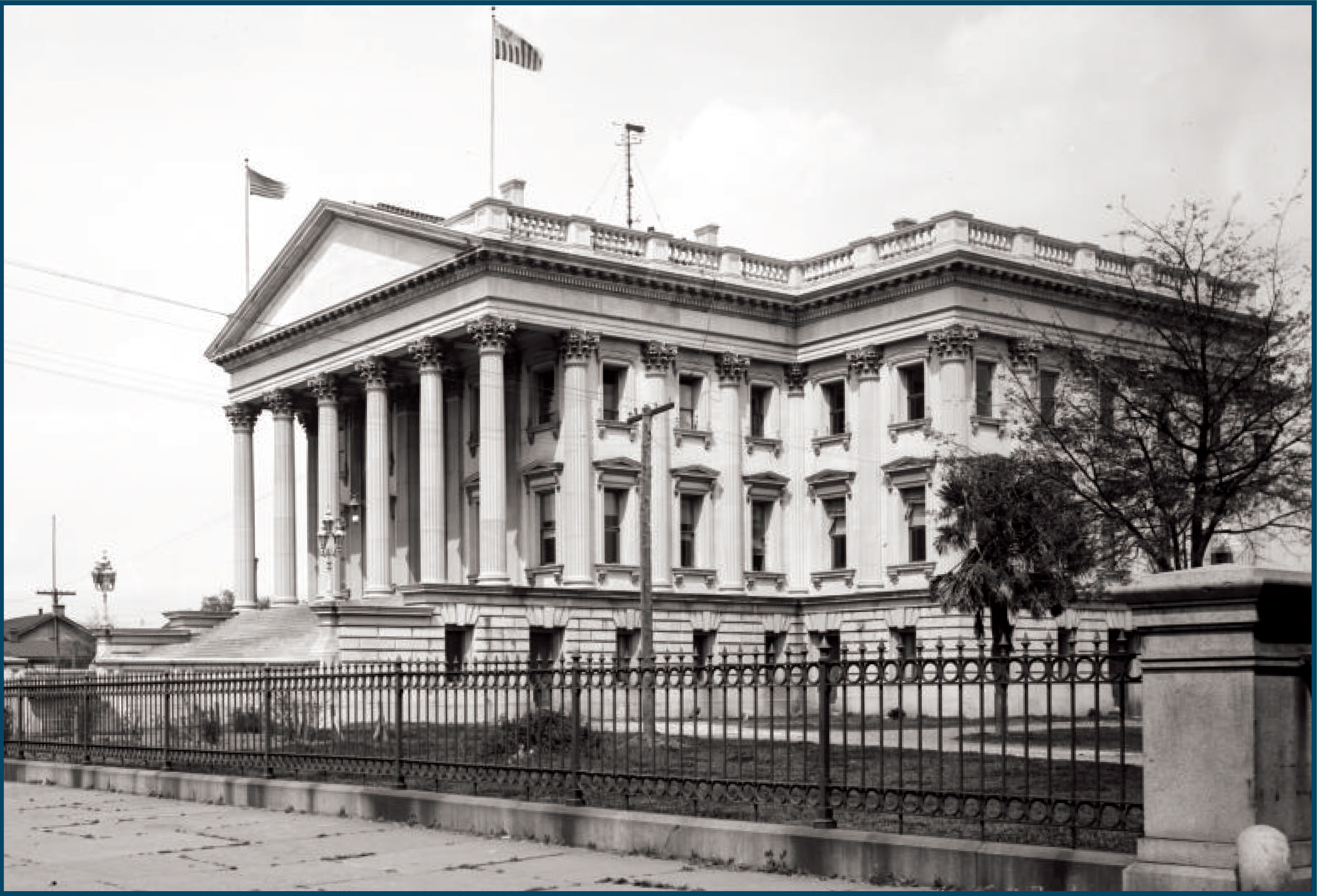
U.S. Custom House, circa 1900.
PHOTO COURTESY OF THE LIBRARY OF CONGRESS,DETROIT PUBLISHING COMPANY PHOTOGRAPH COLLECTION

LOVAT
Hastings-on-Hudson, NY
In 1855, leather merchant Thomas A. Fraser built a Greek Revival style country house using Hastings marble on his 20-acre estate. Called Lovat, the house had a northwesterly view of the Hudson and a southwesterly view of the Palisades. A benefactor of the Village and active on early school boards, Fraser was instrumental in the planning of Hastings’ first public school building, now the home of the Hook & Ladder Company on Main Street. Fraser’s descendants lived in Lovat until 1956, when all but .75 acre was sold to a developer.

Lovat, circa 1934. The house is in private hands today.
PHOTO COURTESY OF THE HASTINGS HISTORICAL SOCIETY

PHOTO COURTESY OF THE HASTINGS HISTORICAL SOCIETY
READ-MOORE HOUSE
HASTINGS-ON-HUDSON, NY
Built circa 1855 for Jehiel Read, a New York City hat merchant, this house of Hastings marble was designed by Yonkers architect Lyman A. Gouch. Laid out asymmetrically, it features a large wraparound veranda and a four-story tower. A later owner was master silversmith Edward C. Moore, the artistic director for Tiffany and Company, who moved into the house with his family in 1890.
